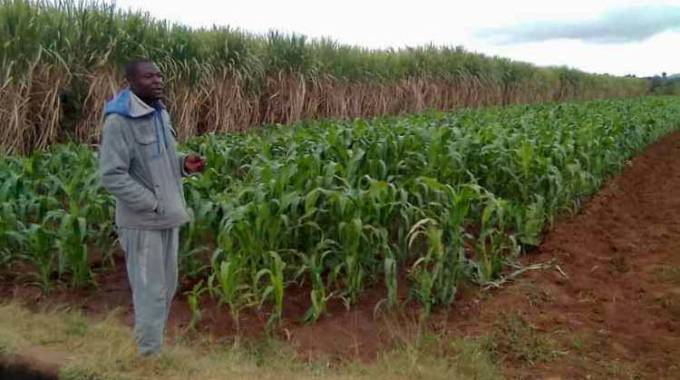Source: Buhera farmers toast to new dam | The Sunday Mail
Debra Matabvu recently in BUHERA
FOR years, Richard Mufudza watched his family toil to earn a decent living from their small plot under the Murambinda A irrigation scheme in Buhera.
His family plot is one of the 34 owned by families operating under the 38-hectare irrigation scheme that was set up in 2004.
Mwerahari River, which runs through Murambinda Growth Point, has for years been their only source of water for irrigation.
Buhera is one of the driest districts in Manicaland Province, with average annual rainfall of between 650 and 700 mm.
Coupled with the effects of climate change, which is causing recurrent droughts, water for irrigation from the river has been dwindling over the years.
In addition, the coming of the winter season often meant that Mufudza and the other families who are part of the Murambinda A irrigation scheme could not farm.
This, in turn, meant loss of critical income.
“My father used to farm under this scheme for years but it was always difficult to get any meaningful harvest despite being under irrigation,” he said.
“Between June and September, there was no farming because Mwerahari would have dried up.
“Farming would only commence in October or November when the rains start falling.
“So we were limited to growing summer crops such as maize and beans.”
However, such challenges are now a thing of the past.
The commissioning of Marovanyati Dam last year has brought relief for farmers.
They now have abundant water to irrigate their crop all year round.
Winter is no longer considered a fallow season.
The multi million-dollar dam, which President Mnangagwa promised to the community in May 2018, was completed last year and is now changing the face of agriculture in Manicaland’s driest district — Buhera.
An excellent 2020/2021 rainy season, which saw the dam spill within months of completion, also brought good tidings to farmers who are now finalising winter cropping.
“Construction of the dam was a game-changer,” said Mufudza.
“We can now farm all year round and we can also venture into winter crops such as winter wheat, cabbages, sweet potatoes, onions, to mention a few.”
For the first time in years, farmers under the Murambinda A irrigation scheme have put nearly 10 hectares under winter wheat, a sign of the changing times.
“There was a time when we delivered wheat to the Grain Marketing Board (GMB), but we had stopped because of the water situation.
“Now that we have sufficient water, we are hoping to begin doing the same thing.”
Additional Government support through provision of inputs and access to markets, he added, would complete the transformation.
The dam has become a conduit for an embryonic agriculture revolution in Buhera and the rest of Manicaland province.
Marovanyati has the capacity to irrigate 1 249 hectares throughout the year.
Clearing of the first 1 200 hectares under Guwanda and Murambinda B irrigation schemes to be irrigated by water from the dam has since begun, while construction of canals supplying water from Mwerahari, which now feeds from the dam, to the new irrigation schemes is now at an advanced stage.
The fortunes of Murambinda Growth Point are gradually changing, as water supplies have since increased to nine megalitres daily.
Rural communities near the dam have also been connected to water lines and are now accessing potable water.
But, for the Buhera community, Marovanyati Dam will provide more than just water for irrigation and domestic use.
The scenic topography around the dam makes it ideal for tourism activities such as boat cruises and fishing.
Buhera Rural District Council chief executive officer Dr Emily Chibvongodze said council was soliciting for tourism sector investors to take advantage of the new dam.
“The commissioning of the dam by President Mnangagwa has opened up a lot of opportunities in the area,” he said.
“Besides agriculture, there is huge potential for tourism at the dam.
“One of our biggest advantages are the scenic views all over Manicaland. So tourism is a low-hanging fruit.
“We have started working on a strategy on how to tap into the industry.
“We will be holding an investment conference at the end of June or early July targeting local and foreign investors who would like to invest in Marovanyati.”
For Mufudza, the dam is a once-in-a-lifetime opportunity to revolutionise his small agro-enterprise and to change the face of this small farming community.
In 2018, President Mnangagwa undertook to facilitate the construction of water bodies and irrigation schemes as part of measures to climate-proof agriculture.
This year, Government will fund the construction of three major dam projects after Treasury set aside over $10 billion.
Gwayi Shangani Dam in Matabeleland North is set to be commissioned by year-end and will irrigate 10 000 hectares, while Muchekeranwa Dam, which was commissioned in May, is set to irrigate 2 250 hectares.

COMMENTS